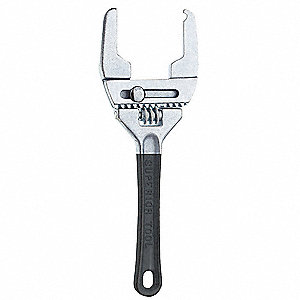Thanks again to everyone who posted

Apologies for the delay in updating the thread. Things have not exactly gone according to plan which, for me, is not uncommon when involved in plumbing adventures...
In a nutshell:
On Friday I replaced the new flush valve with another new flush valve (Fluidmaster). This time, I used a proper tool (an Irwin flat combination plumber's wrench @ $10 from Lowes) to tighten the nut on the flush valve. Thinking that
surely this time I had made a good seal, flushed, waited, but there was still water dribbling down the back of the bowl after the tank and bowl filled.

So Monday I went back to the plumbing supply and got a new gasket for the flush valve. Thinking that possibly I had over tightened the nut the last time, I wanted to try again with a fresh gasket. Took the tank back off, got everything put back together, tested, and yet again, water dribbling into the bowl when it shouldn't have been.
At this point I was at a loss as for an explanation. I shut off the supply and flushed, emptying the tank except for about an inch or so below the rim of the flush valve. My thinking was to isolate the seal between the flush valve and the tank, while eliminating the seal between the flapper and the flush valve from consideration. Sure enough, still had the dribble happening which should point to a bad seal flush valve to tank.
But then I decided to empty the tank completely, just to verify my most recent conclusion. And to my surprise....even with the tank empty and literally dried out with a towel, and also with the insides of both the flush and fill valves dried out with paper towels, and the fill tube removed...water still dribbled into the bowl. It was not gushing, or steady, but it was there pretty much as I had been seeing on my previous attempts.
I had noticed when drying the inside of the flush valve for my test, that I could see water standing below the valve, in the upper back part of the bowl where the flush valve empties. After mulling this a while, I decided to get out my carpenter's level. I discovered that this toilet is tilted backward, towards the wall, at between 1/2 to 3/4 inch total incline. So my theory, the only explanation that I can come up with, is that because the toilet is not level, water in the back part of the bowl does not empty properly after a flush, some of it stays and it is this water that slowly dribbles out. Perhaps there is some kind of capillary action happening along the trails of mineral deposits that have developed over the years? I don't know if this is a one-in-a-million thing, or something that plumbers see frequently, or if this is indeed what is happening.
So I don't think I can fix this, not completely. The dribble is less than when I started, I believe because some (most maybe) was leaking under the old flapper. But all of the flush valve and/or gasket replacements did nothing to improve the situation. The good news it that I have gotten pretty good at removing and re-installing a toilet tank. And perhaps this is a good lesson for me in that there are times when I have to accept imperfection, lol.




